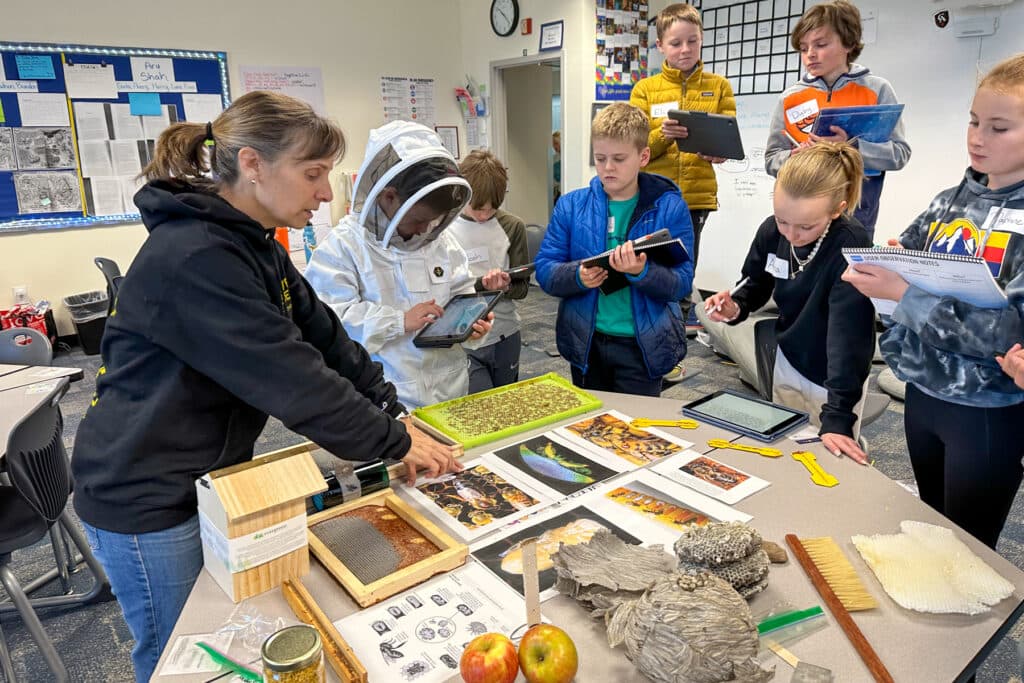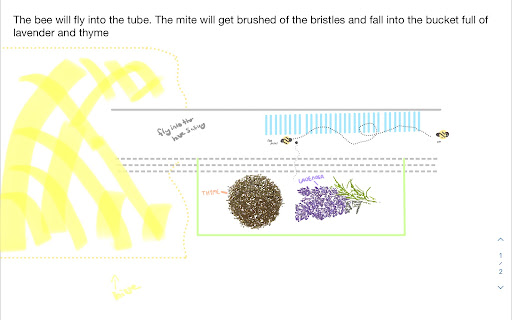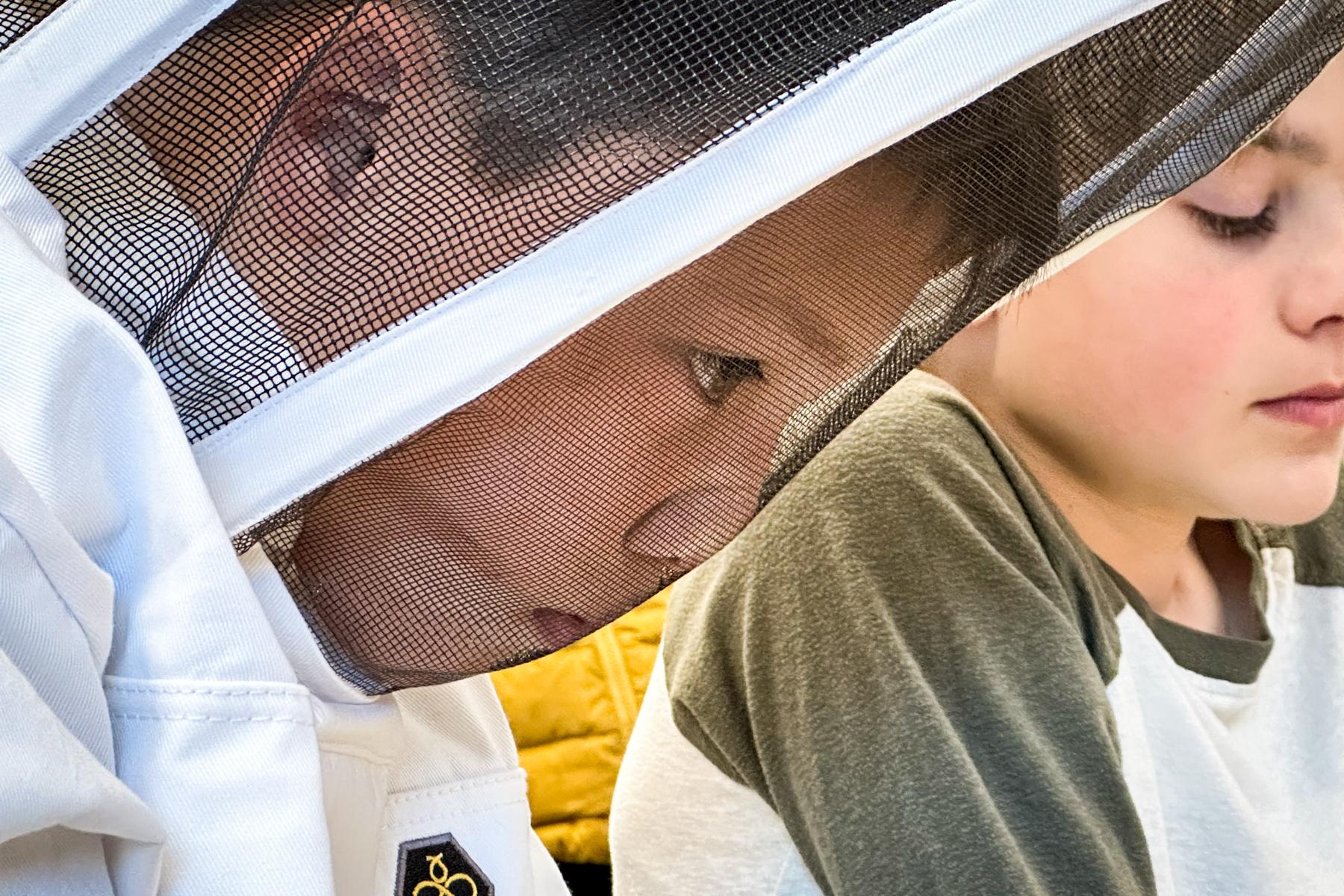
A dozen fifth-graders peer at a blown-up microscope image of a Varroa mite.
“It’s not a pretty thing,” master beekeeper Carmen Weiland tells them.
The mite has a bulbous body, eight segmented legs that look like claws capped by a sucker, and a hairy, bristly back. There’s no “ewws” or “gross.” These fifth graders are all business. They’re on a mission.
“Is that the mouth?” asks student Daphne Dias.
“Yep, that’s what attaches into the bees,” said Weiland, who is also director of operations for Knapp's Nectar in Eagle, Colorado.
“Similar to a tick sort of?” asks Dias.
“Exactly. So we get lyme disease from ticks, and it makes the bees really sick. They get deformed wing virus, they get foulbrood, they get lots of diseases,” responded Weiland.
The ugly creature that comes from Asian killer bees latches onto honey bees and kills the hive, destroying one of our most critical pollinators. A third of everything we eat is pollinated so if bees go kaput, well, so does our food source. The fifth graders' task? Stopping the mites.
This spring, fifth-grade classrooms at the Colorado Academy school each worked with a community partner that had a challenge. One group worked with the Denver Zoo, another with the National Renewable Energy Lab, another with the Denver Art Museum. Jessica Ohly’s class partnered with Lakewood Parks, where two hives have died because of mites.

‘It’s something that people are trying to solve all over the United States, so how are fifth-graders going to tackle that piece?’
That was Ohly’s first thought.
Students would use the design thinking process, which includes defining the problem, coming up with ideas to solve it, creating prototypes, and testing it. But – they’d consult with experts. Room 30 made a field trip to visit Ranger Dave at Lakewood Parks to see the hives and ask questions. They invited Weiland from Knapp's Nectar to bring the students up to speed on the latest research by beekeepers and scientists.
When Weiland tells the kids about one of them, a bee gym, a lightbulb goes off. A bee gym is a frame with a wire mesh and spikes that let bees groom their bodies, helping them dislodge the mites. Another clue comes when Weiland tells them about how she counts mites to see if there’s an infestation. She coats the bees in powdered sugar.
“The powdered sugar causes the mites to fall off,” she said.
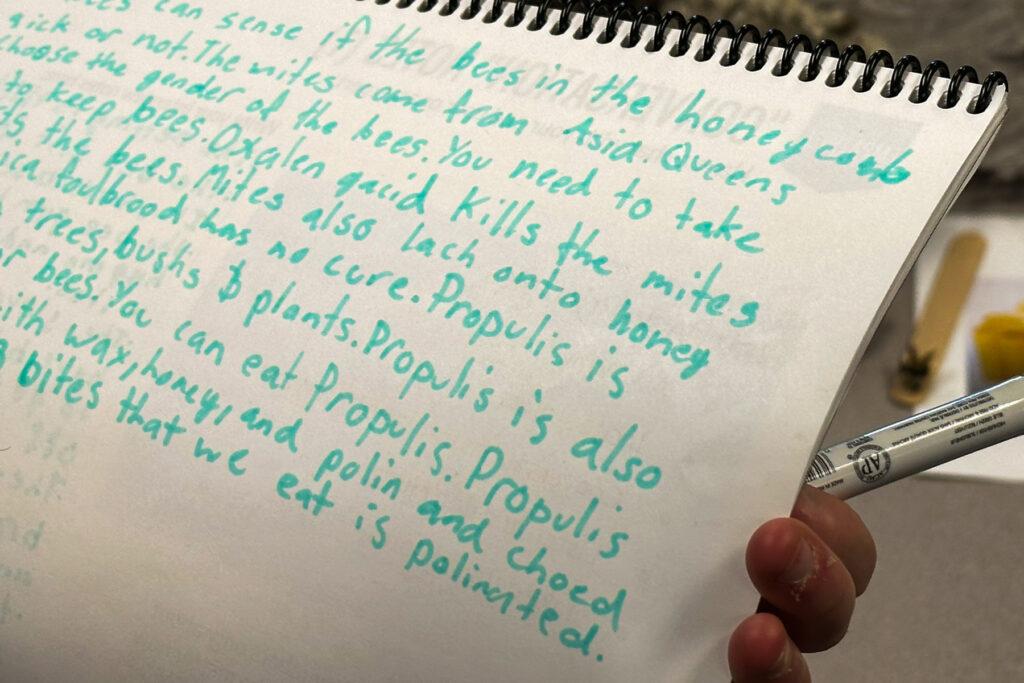
Powdered sugar! A bee gym! The kids are starting to put their ideas together.
Dias peppers Weiland with questions. She wants all the details she can get.
“Are honey bees the only pollinators that mites latch onto or is that just the main one?
“Where is propolis gathered from?
“How much honey and pollen do they put in each cap?
“That’s why I love talking to kids because they’re brains are just open, you know, ours aren’t and they will think outside the box,” Weiland said.
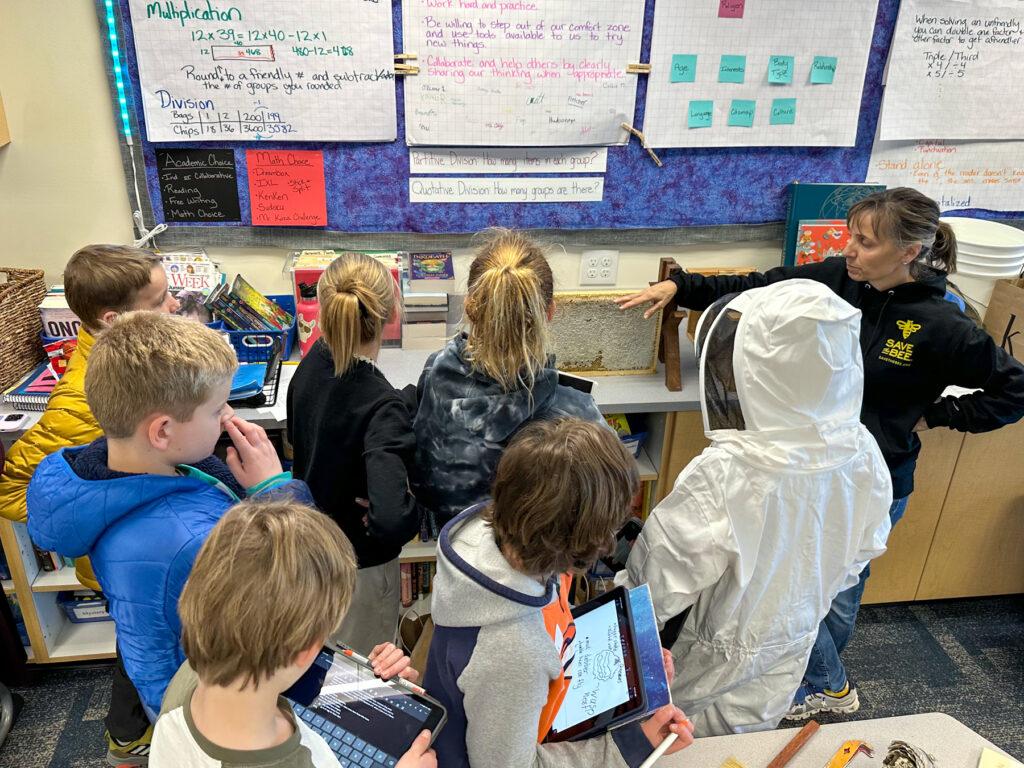
Ideation and prototyping
One of the students' first ideas was a “mite trap.” Mites would fly through an open door and get crushed by spikes.
“This idea didn’t work out because it would be too expensive and the technology would be hard to find,” Oliver Lopez said.
They thought of a spray but discovered it could be toxic to bees and humans. Then a pseudoscorpion. It eats mites — but it lives in warm humid areas so that was nixed. Then they come up with the idea they’d stick with. The fly-through cleaner.
It involved, depending on the group, chicken wire, four pools of water, brushes, and fans with powdered sugar.
Their prototype involved some PVC pipes that bees would fly through to get to their hive. Fans were set up to blow the powdered sugar through the tube.
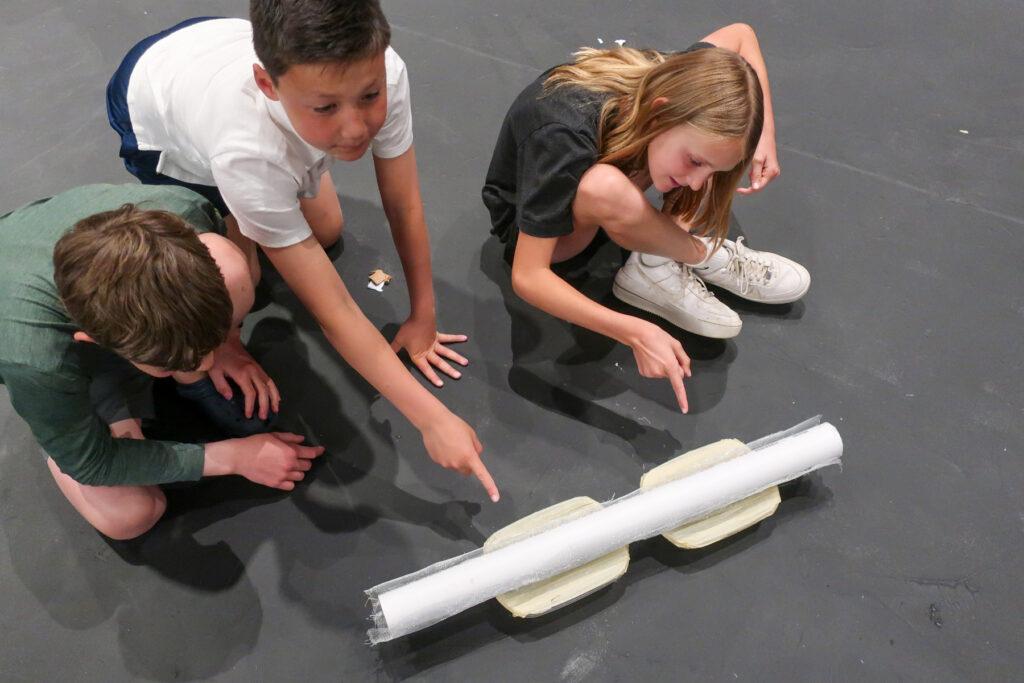
“It was actually part of our research because it said it made it harder for the mites to grip on if there was powdered sugar on the bees,” Dias said.
But then they learned that mites actually like powdered sugar. More consultation with the bee expert.
“We learned mites don’t like lavender but bees do so we could attract the bees with lavender but also mix it with powdered sugar so it would make it harder for the mites to latch on to and also repel them with the scent,” Anna Drolet said.
They suspended lavender from the inside of the top of the tube to attract the bees into the tube. The fan would blow the powdered sugar through the tube. The bees would get coated in it — and mites would slide off and in a removable container filled with water and drown.
They kept having to adjust the fans.
Check out the kids' prototypes:
“Powdered sugar kept going everywhere!” Anna said. “It was a hot mess express!”
The classroom was coated in powdered sugar and the entire classroom smelled like lavender.
There were some technical challenges. A bit of arguing.
“I screamed in a pillow when I got really frustrated,” Anna said.
Then they remembered — they were scientists!
“We would also go back to our beginning stages and redefine and look at our problem statement and our needs statement to see what we are exactly trying to achieve and how can we maybe get there?” she said.
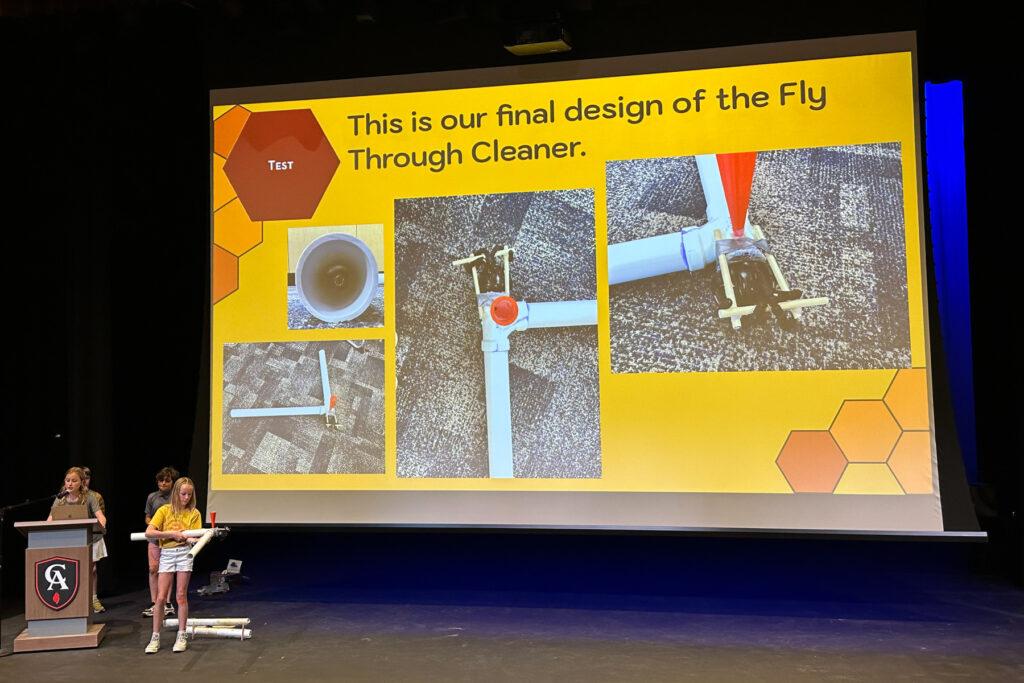
The bee car wash
Another group designed what they called “a bee car wash.” A brush with bristles is suspended from the PVC pipe’s ceiling. The bristles would knock the mite off the bees’ backs and the mites would land in a removable container of water filled with lavender, thyme and water.
“A freaky mixture that mites hate,” Oliver said.
But there were engineering challenges. The students discovered that there was too much space in between the bristles and the removable container so the bees could fly through the pipe without touching the bristles. Hot glue doesn’t always seal PVC piping. But chicken wire around it does the trick. A T-joint is great for connecting pipes.
“Another big problem we figured out was that the bees could be hurt by the bristles since they were too hard,” Matthew Oram said.
They also realized that one piece for the lavender was not enough to make the bees fly high enough to get close to the bristles.
“These are all things we had to find a way to fix before building our test model,” Matthew said.
They adjusted and added a grate that had holes small enough that mites could fall through into the container of lavender and thyme and not bees. They call it the “mite begone tube.”
“If it works, your mite problem will be gone!” Oliver said.
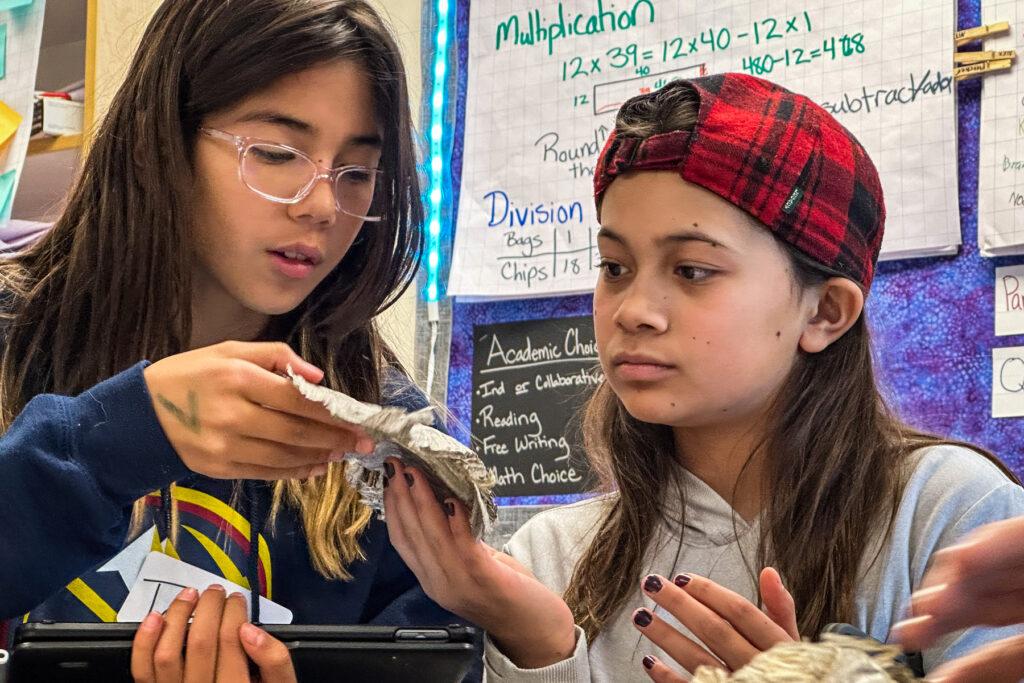
Figuring out the technical challenges was Noah Jacoby’s favorite part of the project.
“Trying to make everything flow together and once it finally worked out it was really fun to see the final product,” he said.
Alex Wall had a different angle about the project.
“My favorite part was dumping all the lavender, thyme and water into the bucket. It was very fun.”
One group even had attached their water container to the PVC pipe with Velcro for easy on-off removal.
True to the final stage of design thinking, the students hope to test out their ideas at Lakewood Parks. They say they love the type of learning where they think about critical problems like bees going extinct.
“When I thought of working on a real-world problem, it made me more motivated and when I get more motivated it makes it more fun, so I can help the world,” Tara Cady said.
The project has changed some of them in a more personal way. Quinn Miller was always afraid of bees.
“And now I feel like I shouldn’t be, because they actually help us out a lot,” she said.
